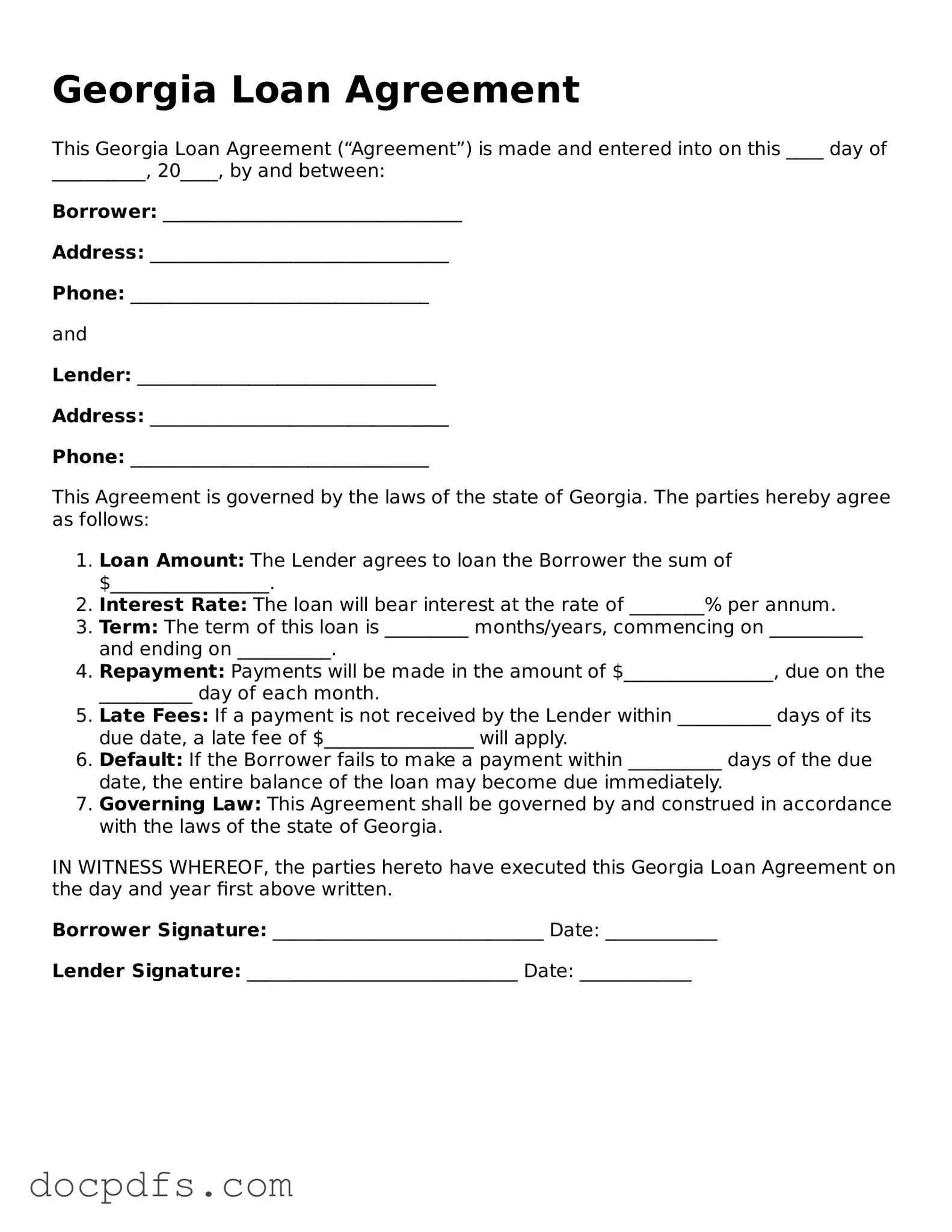Free Georgia Loan Agreement Form
The Georgia Loan Agreement form is a legal document used to outline the terms and conditions of a loan between a lender and a borrower. This form serves as a binding contract, detailing the amount borrowed, interest rates, repayment schedule, and other relevant provisions. Understanding its components is essential for both parties to ensure clarity and compliance with state laws.
Open Loan Agreement Editor Now
